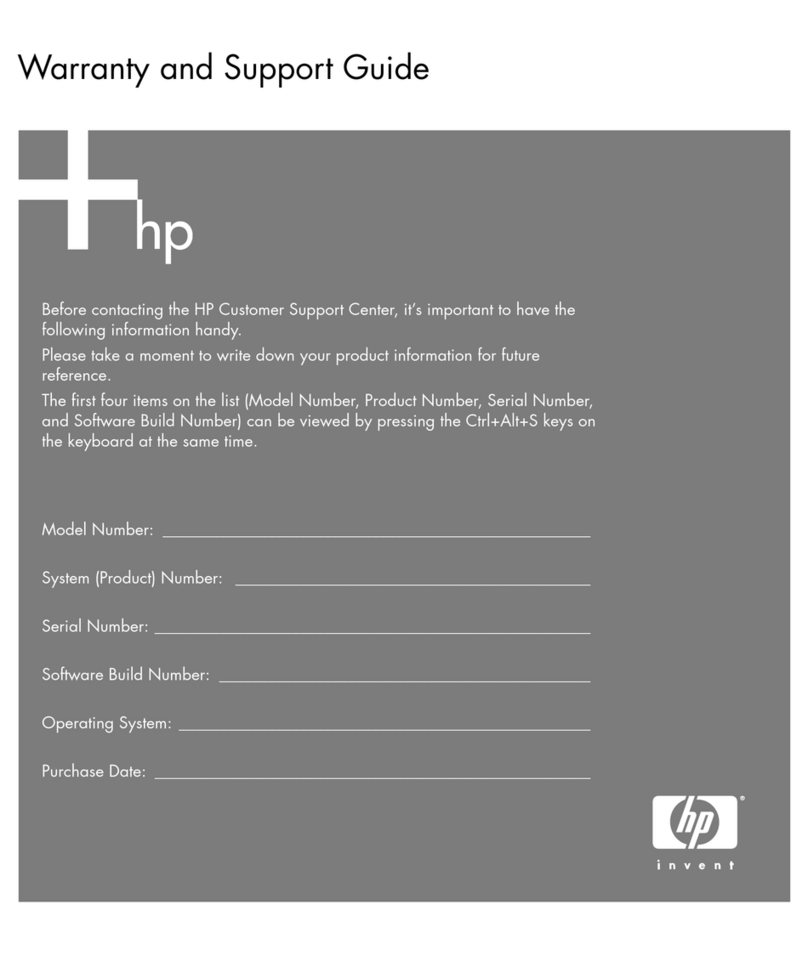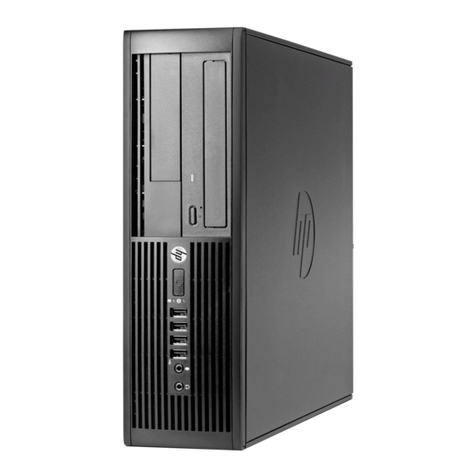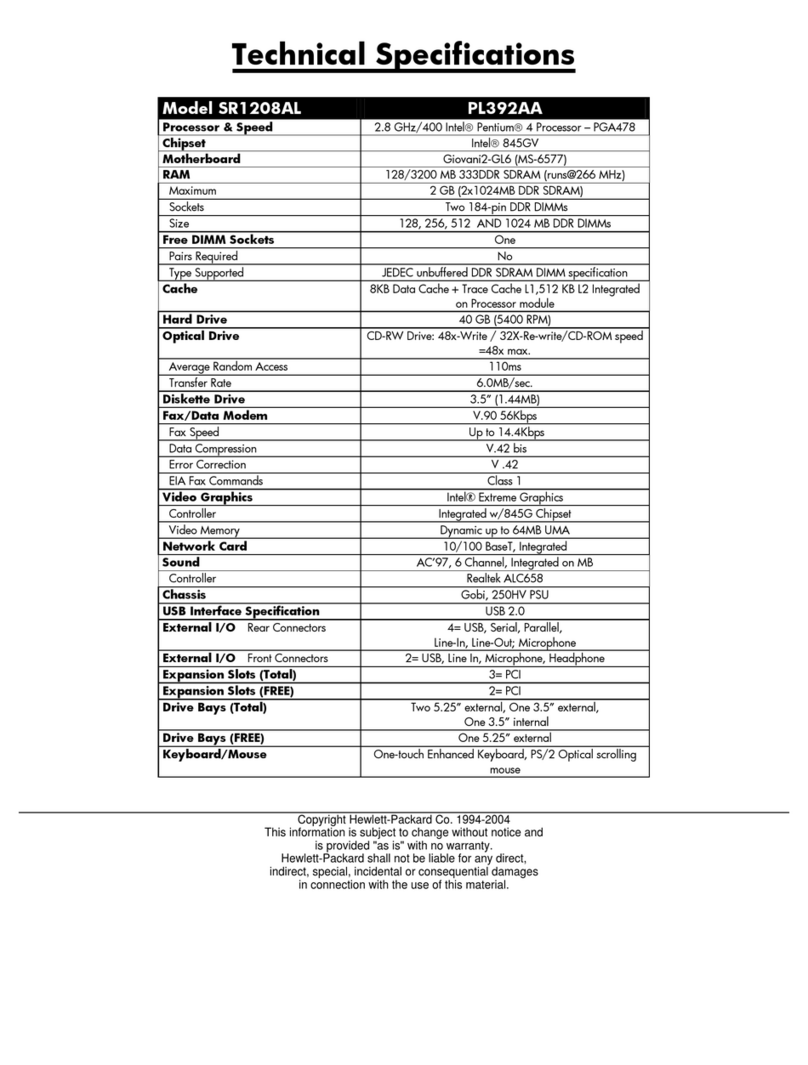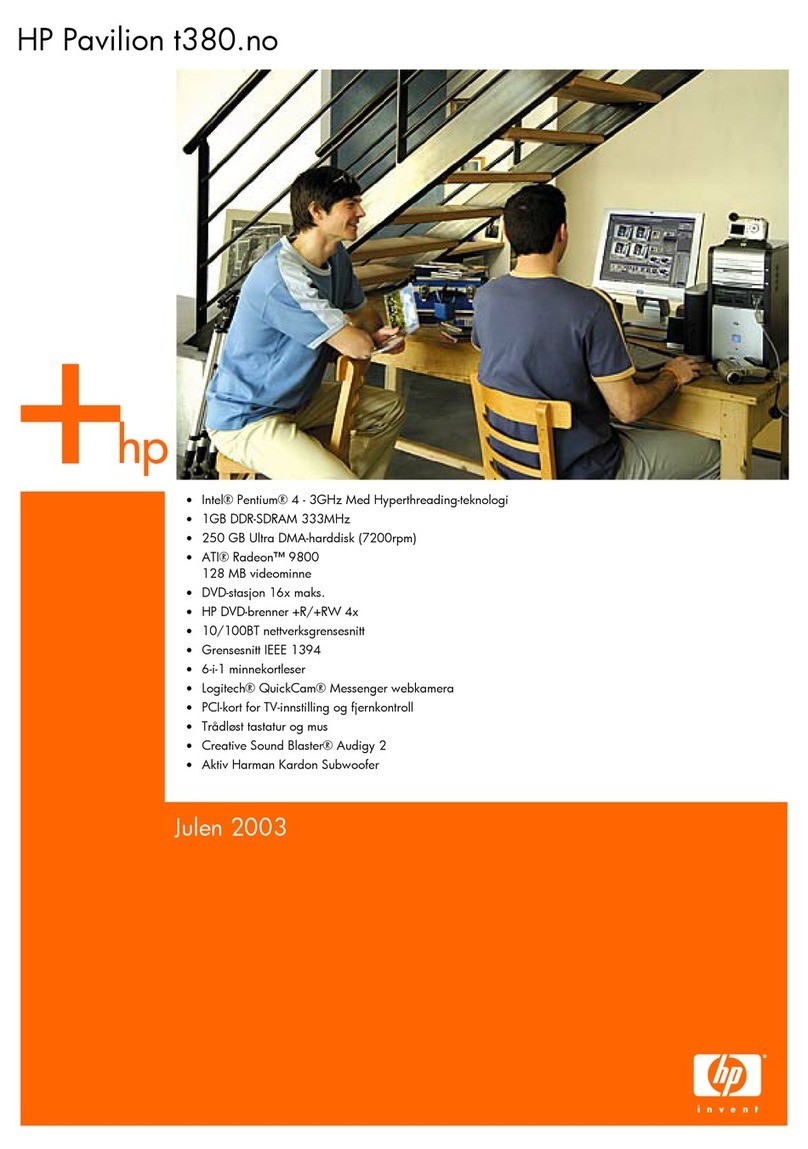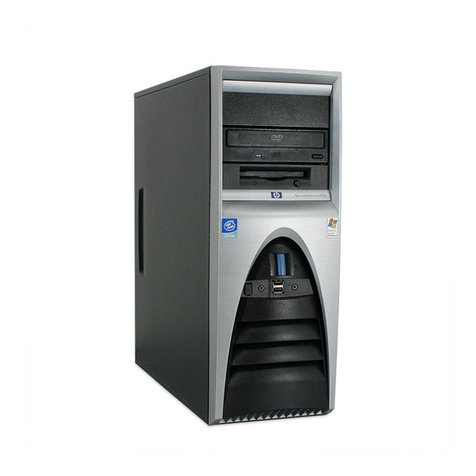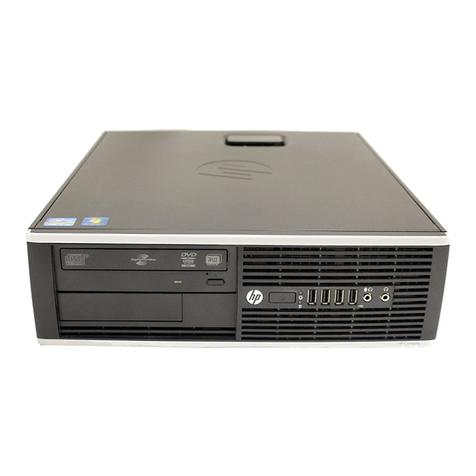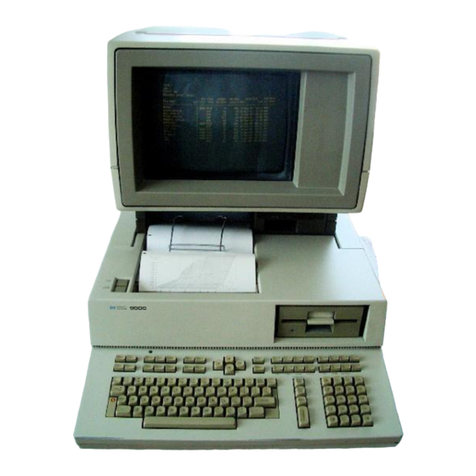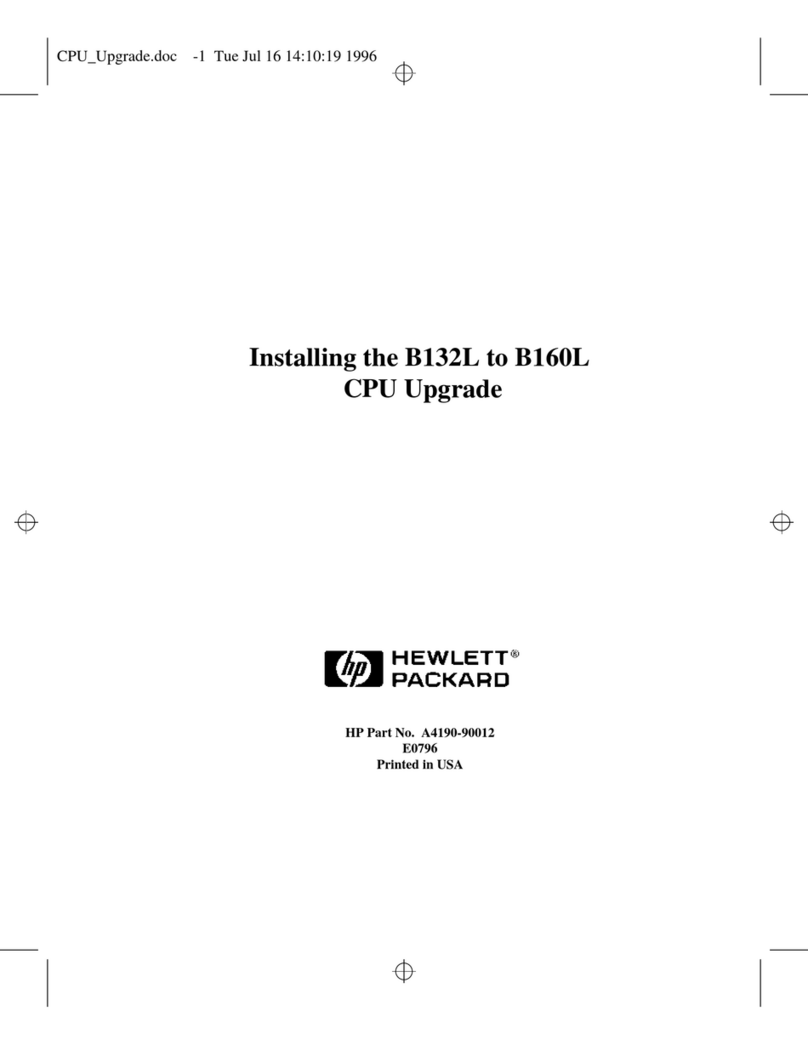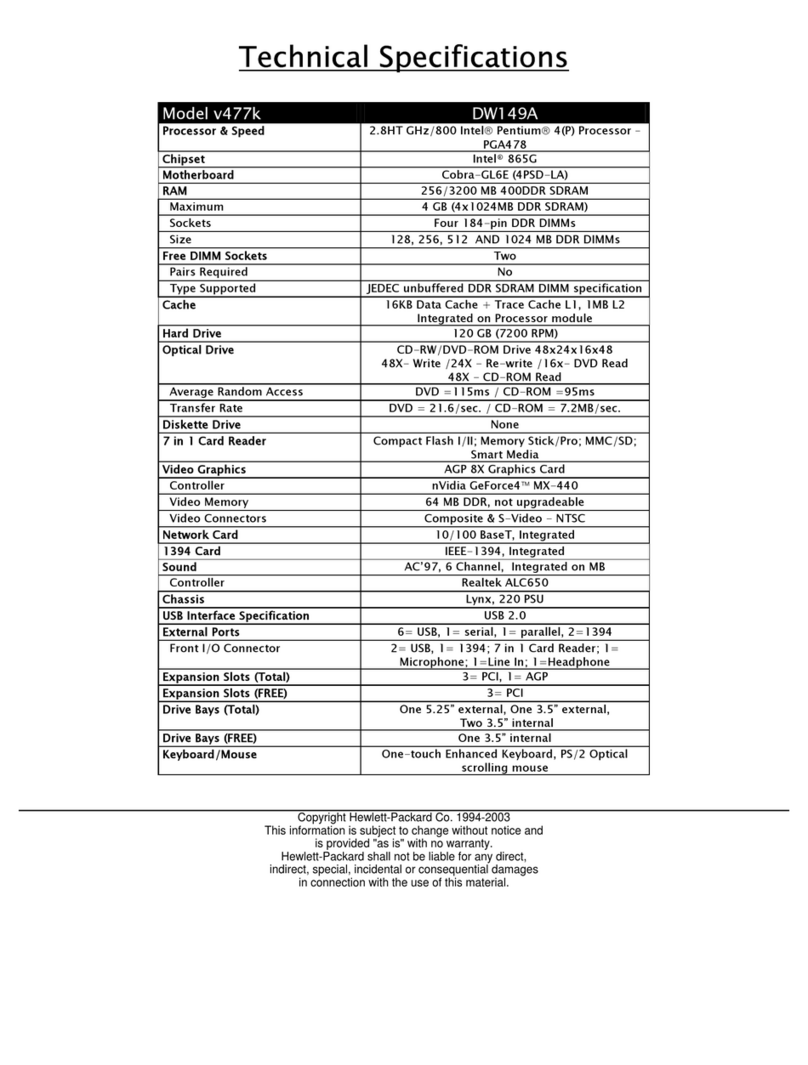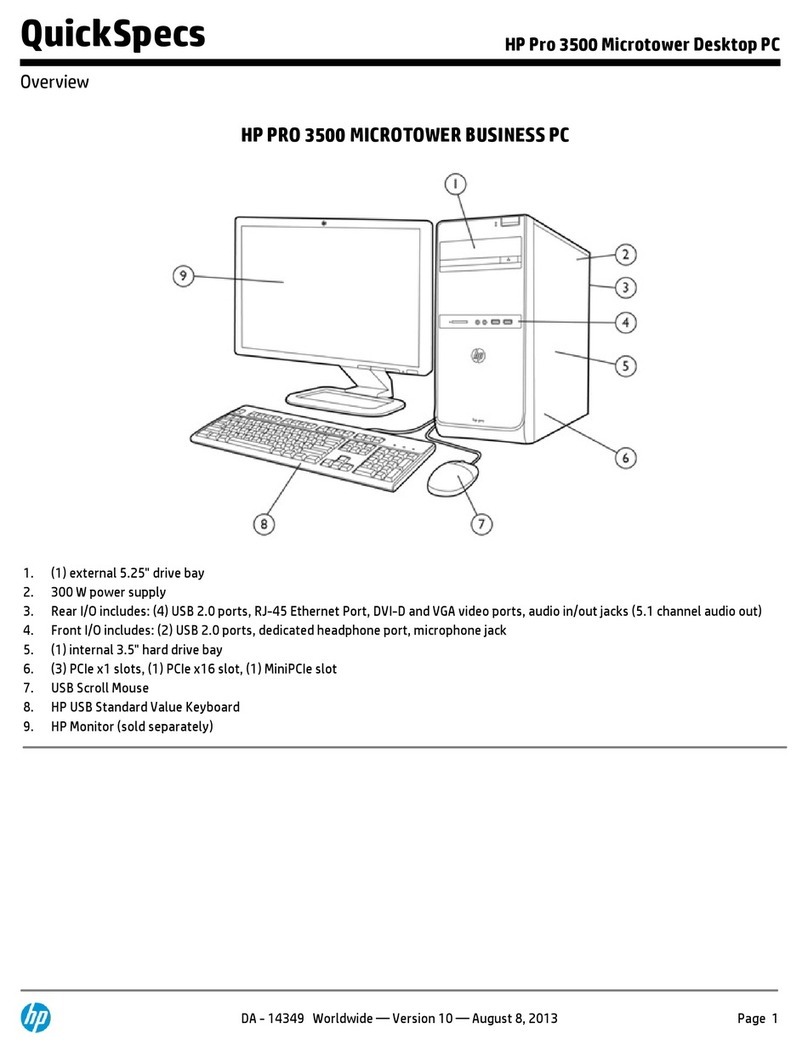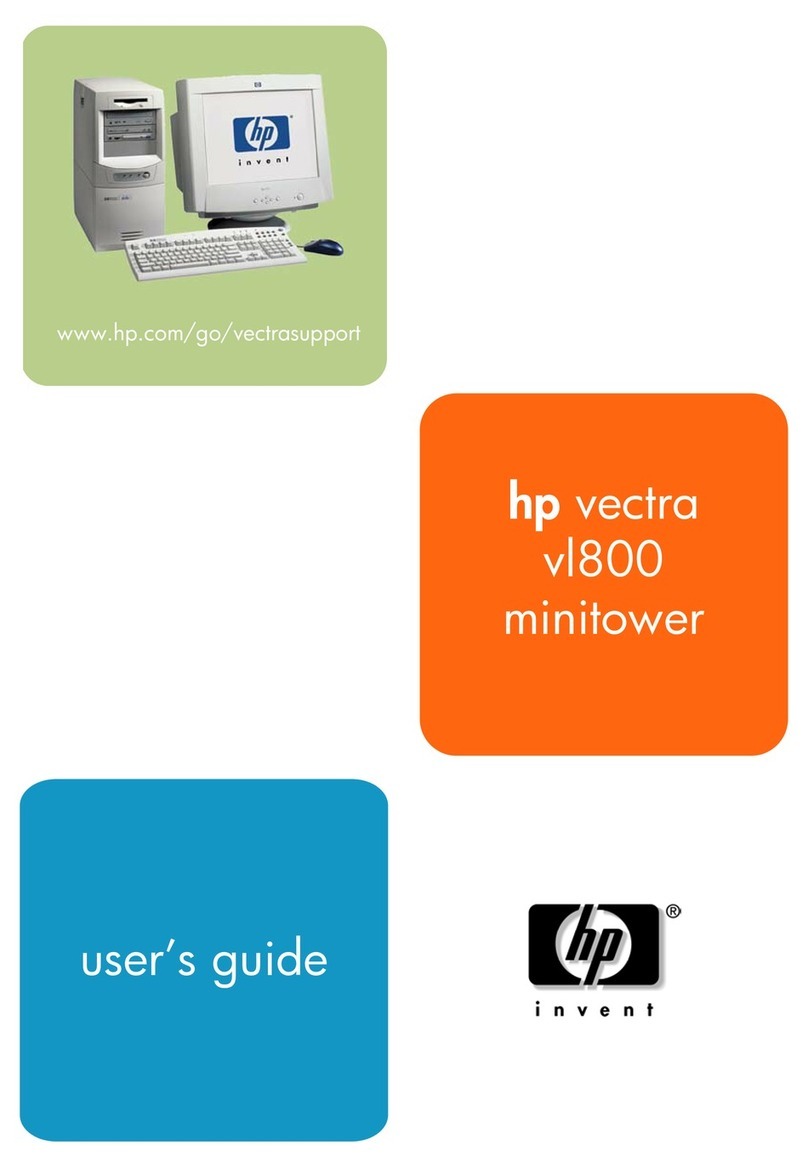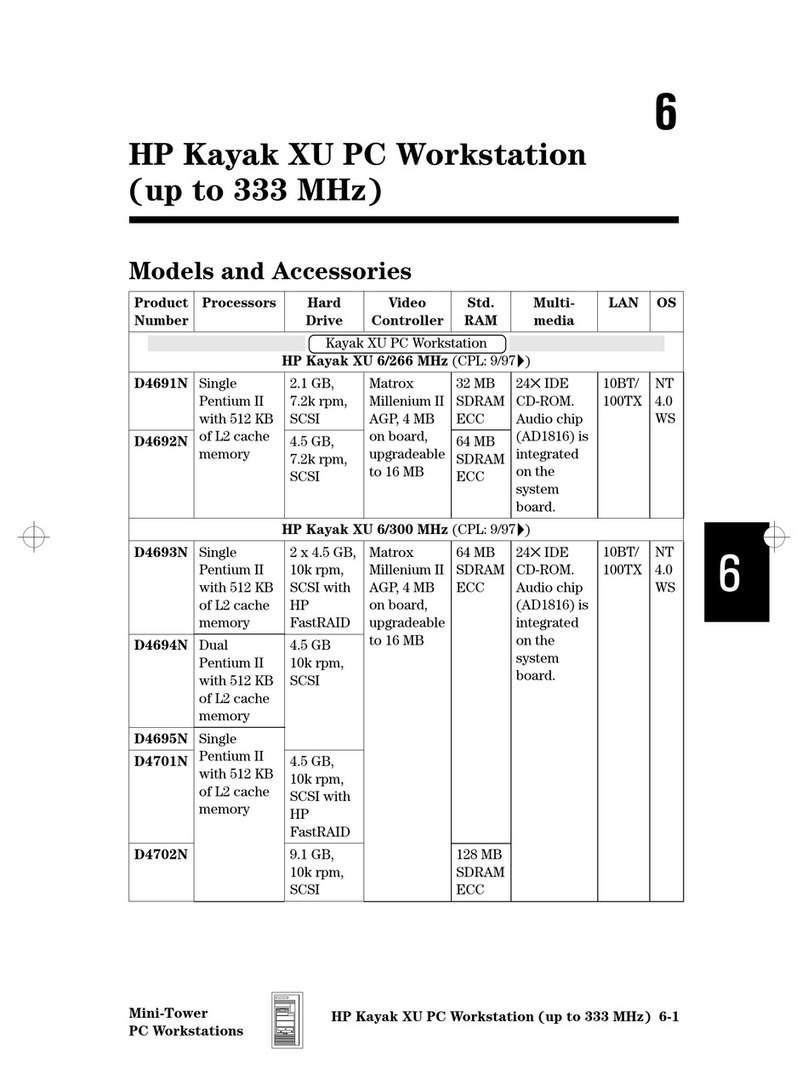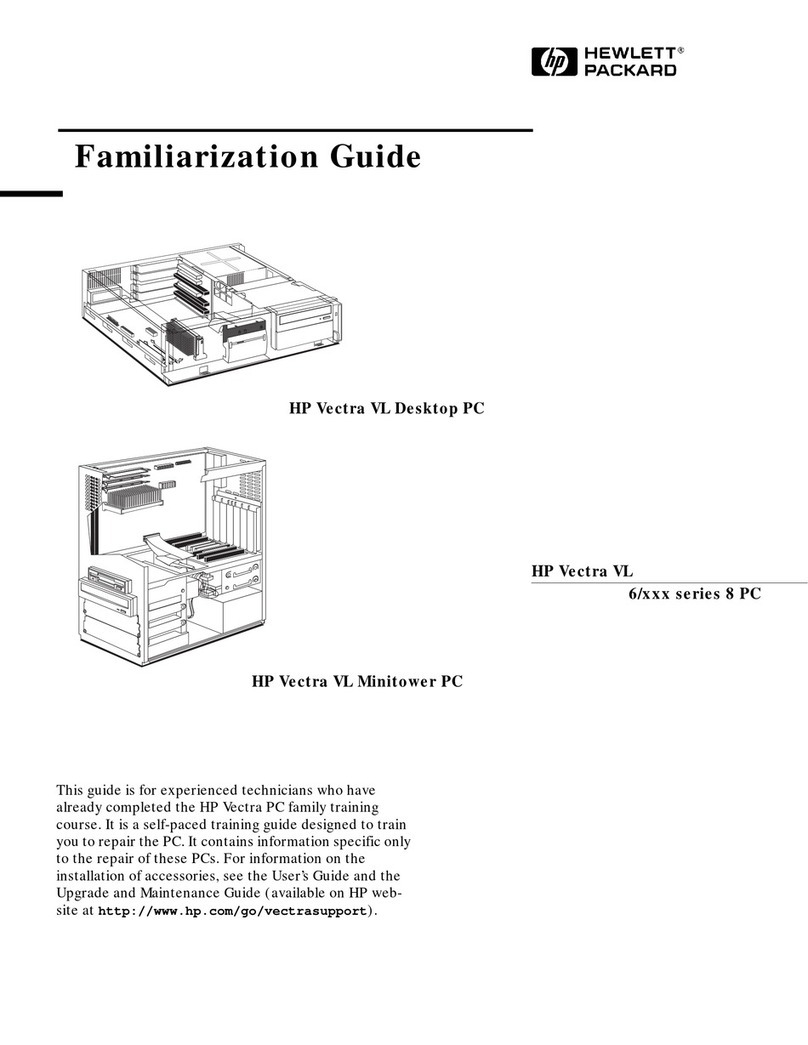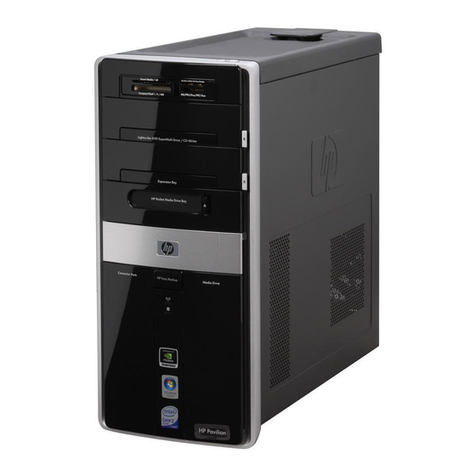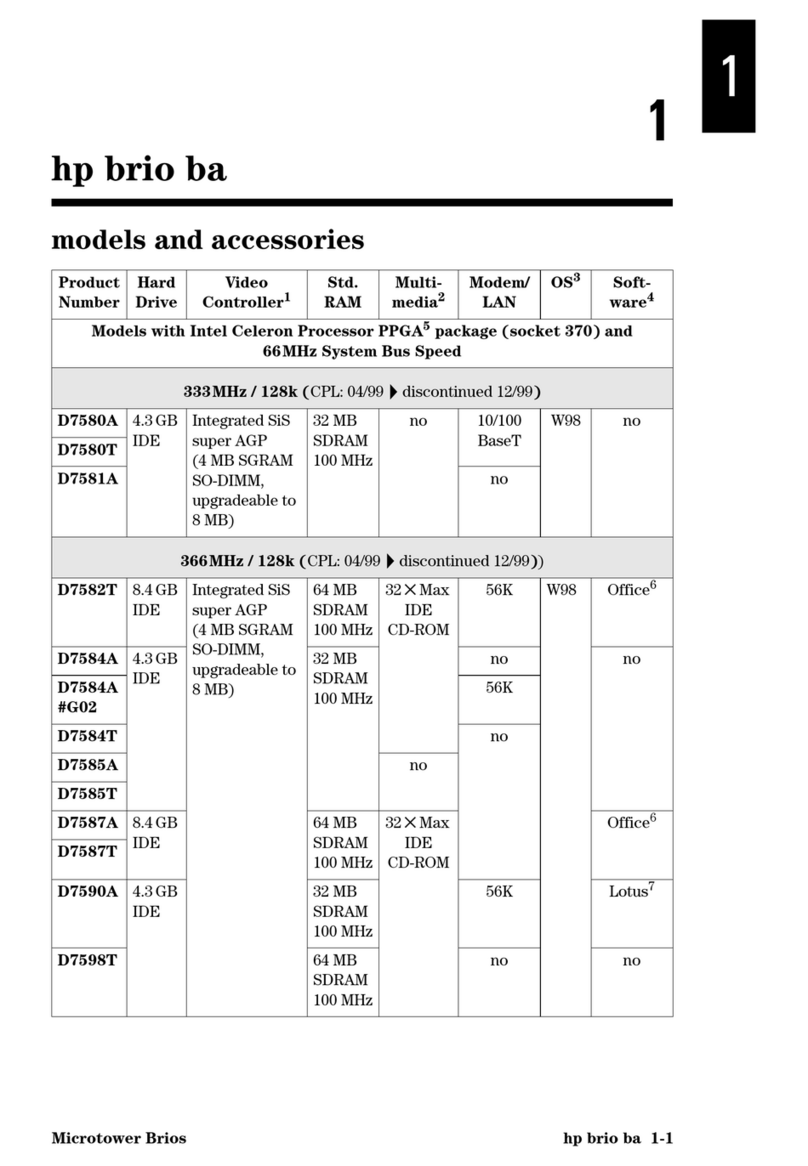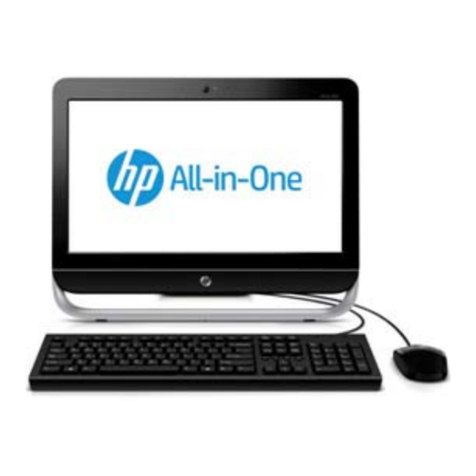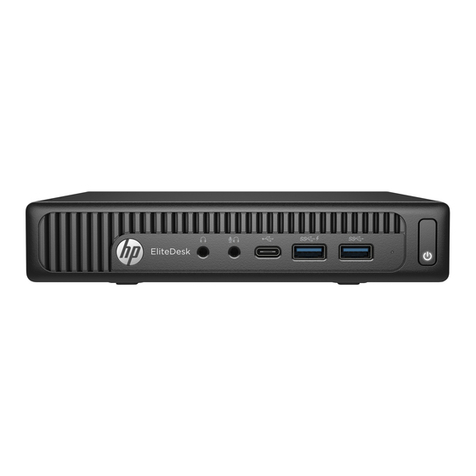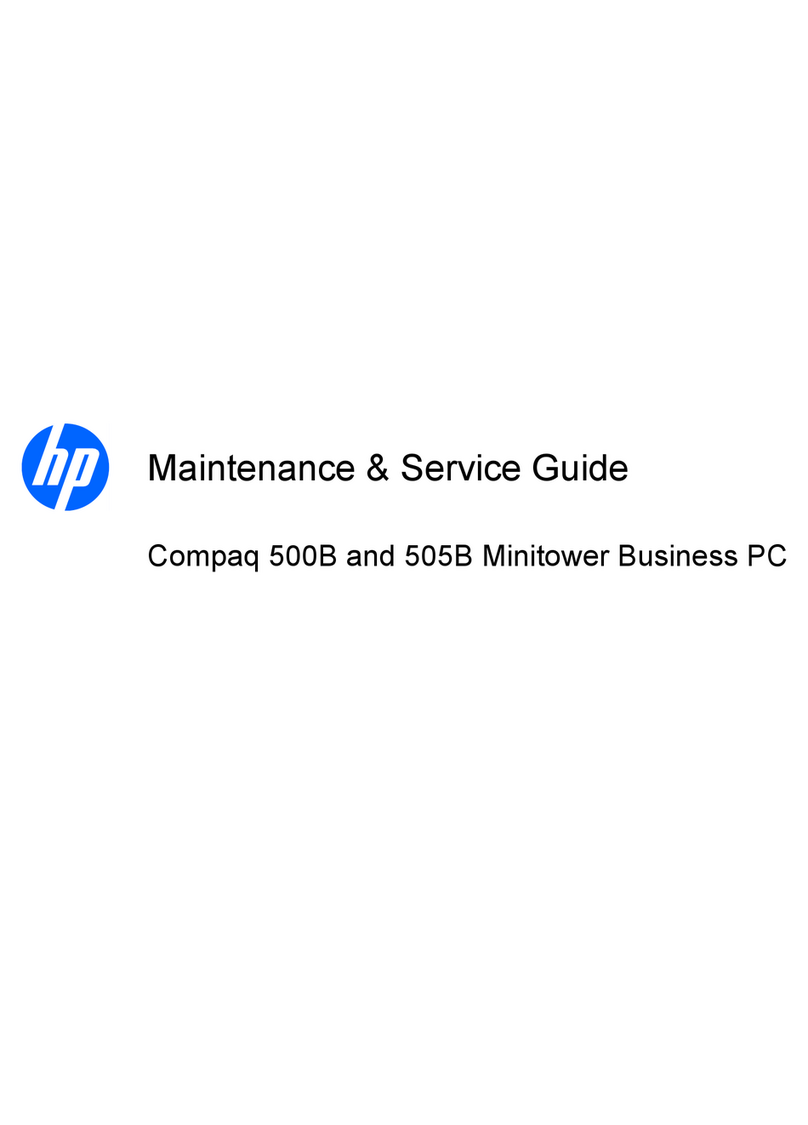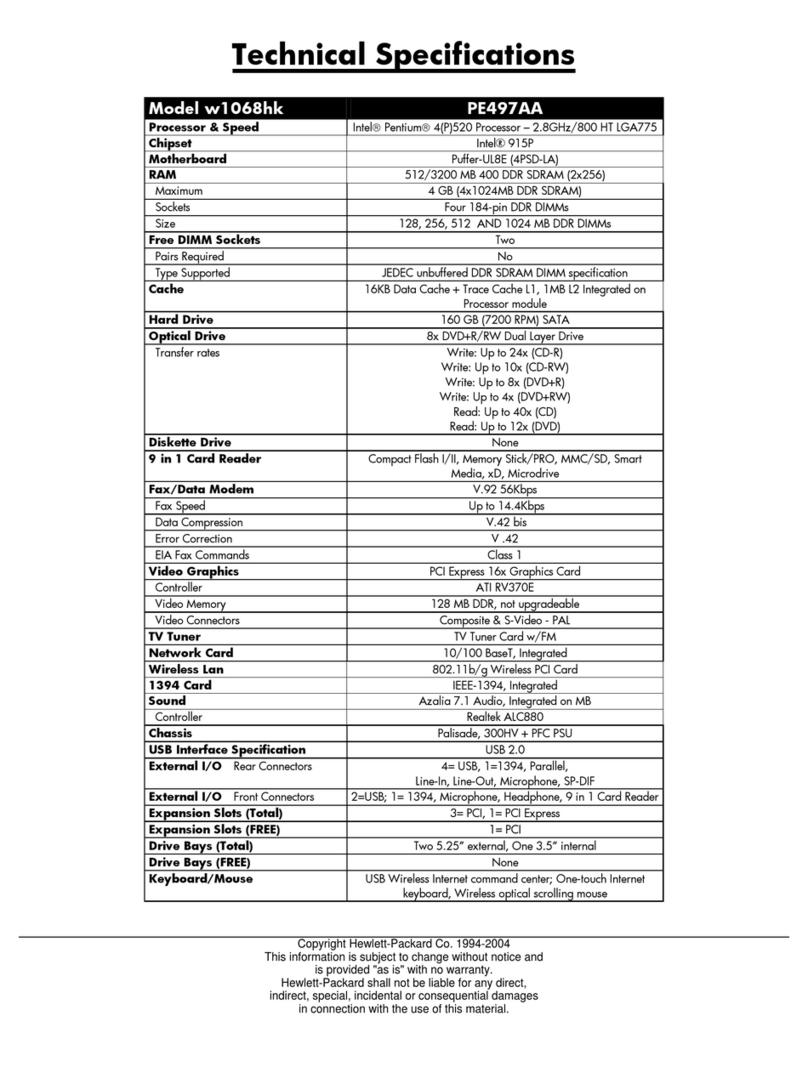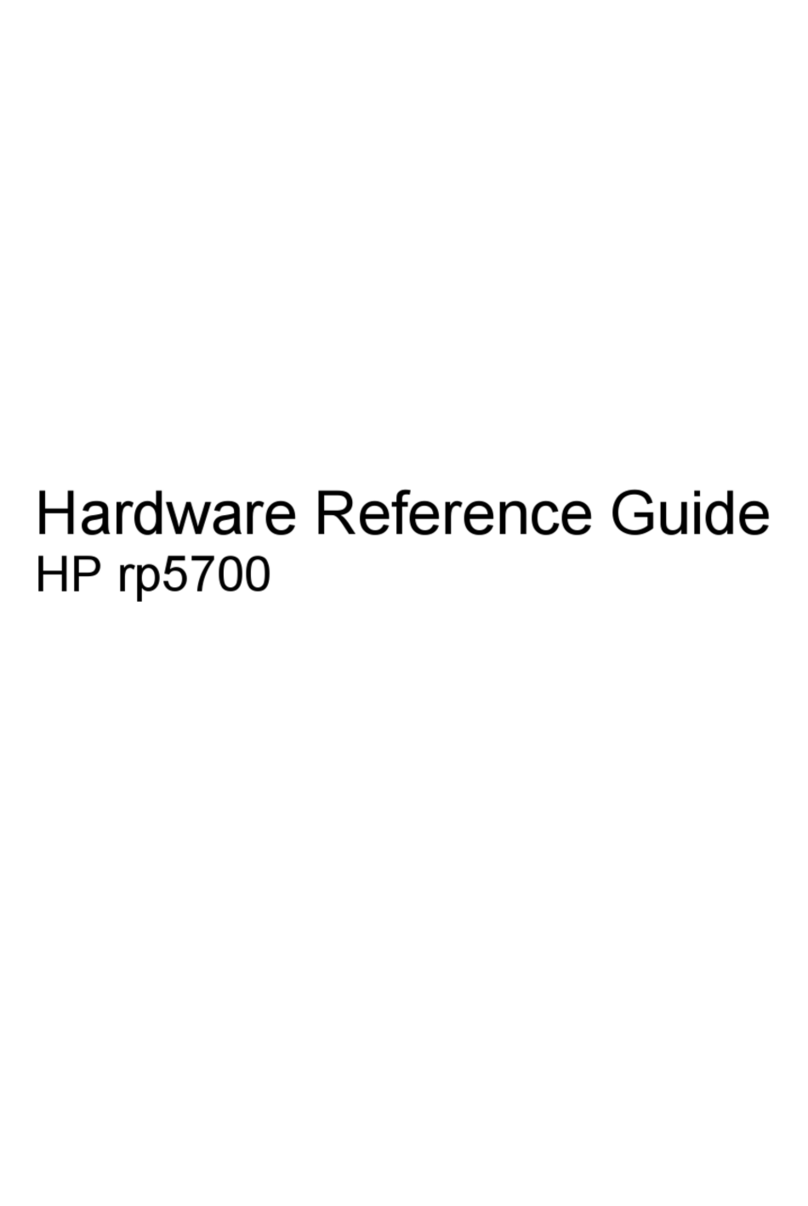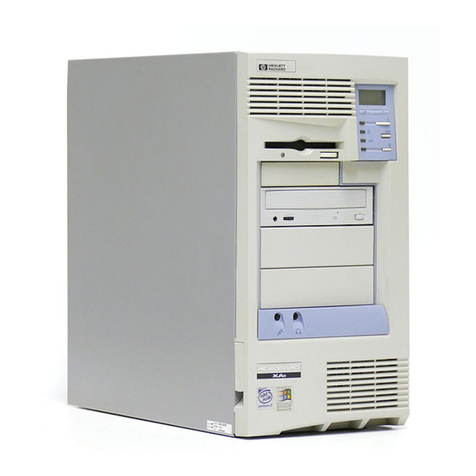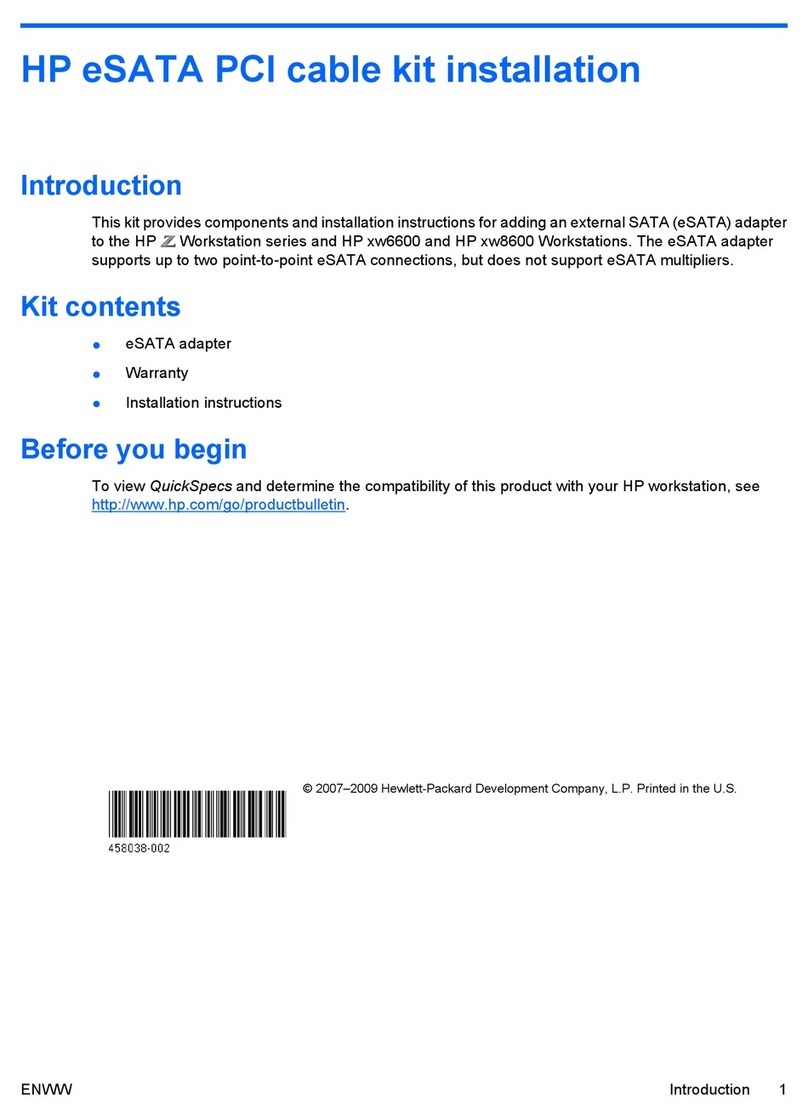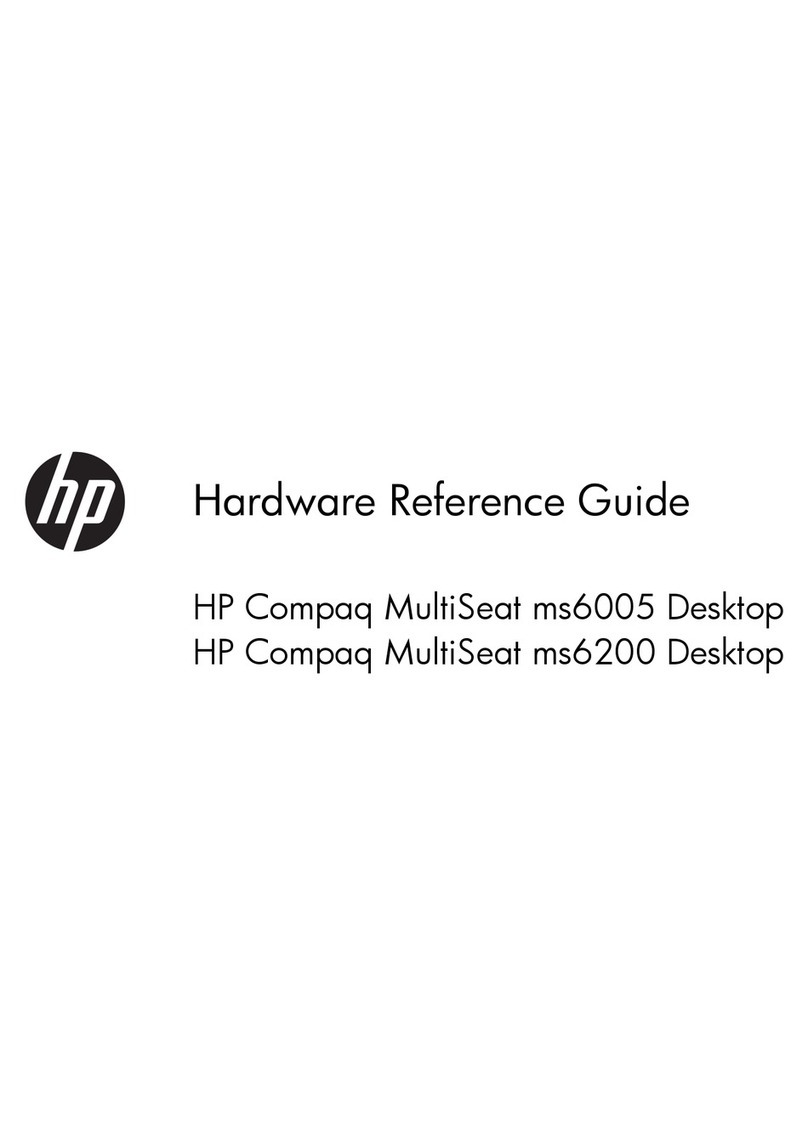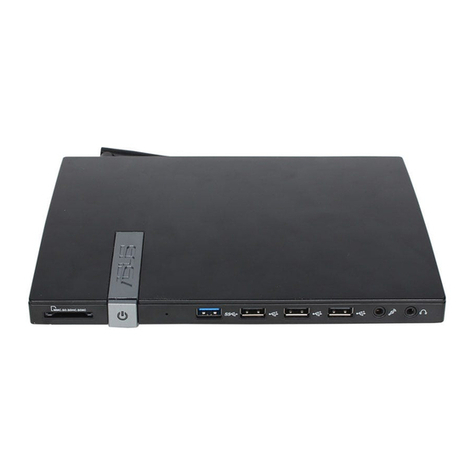
HP 100B AIO Illustrated Parts & Service Map 640046-001 page3
System Board Computer Setup.
System Board Connectors and Jumpers (component location may vary)
WEB CAM Webcam connector USB_CON USB connectors (4)
POWER Power button board connec-
tor
HDD POWER Hard drive power connector
DIMM3 Memory socket 2 HDD_CON Hard drive data connector
DIMM1 Memory socket 1 ODD_CON Optical drive data connector
USB_CON USB connectors (2) ODD POWER Optical drive power connec-
tor
BAT RTC battery socket
LCD_CON
Display connector
MIC Microphone connector S/W System password header
HEAD-
PHONE
Headphone jack INVERTER Inverter board connector
LINE _OUT
Headphone jack
FAN
System fan connector
SPK_L Speaker jack - left PCIE WLAN module slot
SPK_R Speaker jack - right
SW1
CMOS password header
LAN_CON RJ-45/LAN connector
Common POST Error Messages
Screen Message Probable Cause Recommended Action
101-Option ROM Error System ROM or expansion
board option ROM check-
sum.
1. Verify ROM, reflash if required
2. Remove any recently added
cards to see if problem remains.
3. Clear CMOS. If message
disappears, may be problem
with card.
4. Replace system board
103-System Board
Failure
DMA or timers 1. Clear CMOS memory.
2. Remove expansion boards.
3. Replace system board.
164-Memory Size Error Memory amount has
changed since the last boot
(memory added or
removed).
Press the F1 key to save the mem-
ory changes.
164-Memory Size Error Incorrect memory configu-
ration
1. Run Setup (F10).
2. Make sure memory module(s)
installed properly.
3. If third-party memory added,
test using HP-only memory.
1. Verify proper module type.
201-Memory Size Error RSM failure 1. Ensure memory modules are
correctly installed.
2. Verify proper module type.
3. Remove and replace identified
faulty memory module(s).
4. If error persists after replacing
modules, replace system board.
214-DIMM Configura-
tion Warning
Populated DIMM configura-
tion is not optimized
Rearrange the DIMMs so that
each channel has the same amount
of memory.
301-, 304-Keyboard error Keyboard failure. 1. Reconnect keyboard with
system turned off.
2. Check keyboard connection or
keys.
3. Check connector for bent or
missing pins.
4. Replace keyboard.
5. If 304, possible system board
problem.
511-Display Adapter
Failure
CPU Fan no Detected. 1. Reseat CPU fan.
2. Reseat fan cable.
3. Replace CPU fan.
1801-Microcode Patch
Error
Processor not supported by
ROM BIOS.
1. Upgrade BIOS to proper
version.
2. Change the processor.
1801-Microcode Patch
Error
Processor is not supported
by ROM BIOS.
1. Upgrade ROM proper version.
2. Change the processor.
Heading Option/Description
File System Information - Lists the following main system specifications:
• Product name
• SKU number (some models)
• Processor type/speed/stepping/
cache size
• Memory size/speed/ no. channels
• Integrated MAC Address
• System BIOS
• Chassis serial number
About - Displays copyright notice.
Set Time and Date - Allows you to set system time and date.
Apply Defaults and Exit - Applies the selected default settings and clears any
established passwords.
Ignore Changes and Exit - Exits setup without applying or saving any changes.
Save Changes and Exit - Saves changes to system configuration or default set-
tings and exits Computer Setup.
Storage Device Configuration - Lists all installed BIOS-controlled storage devices.
• Hard Disk - size, model, firmware, serial number, connector color, SMART,
emulation type
• CD-ROM - model, firmware, serial number.
• SATA Emulation - AHCI, IDE
DPS Self-Test - Lets you execute self-tests on DPS-capable ATA hard drives.
Boot Order - Allows you to specify boot order or order of attached hard drives.
• Shortcut to Temporarily Override Boot Order
Security Setup Password - Allows you to set and enable setup (Administrator) password.
Power-On Password - Allows you to set and enable power-on password.
Device Security (some models) - Enables/disables audio, network controllers,
embedded security devices., SATA0-1, system audio, network controllers.
USB Security - Allows you to enable/disable groups of or individual USB ports.
Front USB Ports 11,13, Rear USB Ports 0,1,4,9. Accessory ports 3, 12.
Slot Security - Allows you to enable/disable the mini card slot.
Network Service Boot - Enables/disables boot from OS on a network server.
System IDs - Shows product name, chassis serial number/ UUID, SKU number,
family name, feature.; Allows you to set keyboard locale setting.
DriveLock Security-Lets you assign/modify hard drive p/w for added security.
System Security (some models) - Allows you to enable/disable:
• Data Execution Prevention
• Protected Audio Video Path (PAVP) (some models)
• Virtualization Technology(some models)
• Virtualization Technology Directed I/O (some models)
• Trusted Execution Technology I/O
• Embedded Security Device Support
• OS management of Embedded Security Device (some models)
• Button Retask Password Protection
• Power Button
• Consumer IR Power Button
• Optical Drive Eject Button
Power Hardware Power Management-Lets you enable/disable SATA bus power man-
agement and S5 maximum power savings.
Thermal - Allows you to control minimum permitted fan idle speed.
Advanced Power-On Options - Allows you to set:
• POST messages - Enable/disable
• After Power Loss - Off/on/previous state
• POST Delay - None, 5, 10, 15, or 20 seconds
BIOS Power-On - Allows you to set the computer to turn on at a preset time.
Bus Options (some models) - Allows you to enable/disable PCI SERR# Genera-
tion and PCI VGA palette snooping.
Device Options - Allows you to set:
• Num Lock State at Power-On (on/off)
• Multi-Processor (enable/disable)
• Internal Speaker (some models)
• NIC Option ROM Download (PXE, Disable, iSCSI
Management Devices - Only displayed in the Advanced Menu when the BIOS
detects multiple management options. This option is for installed NIC cards that
support ASF or DASH. Use the Management Devices menu to select if the
BIOS management operations will be through the embedded solution or one of
the installed NIC cards.
Management Operations - Allows you to set:
• MEBx Setup Prompt (enable/disable)
• Unprovision AMT on next boot
• SOL Terminal Emulation Mode
• SOL Local Keyboard (enable/disable)
